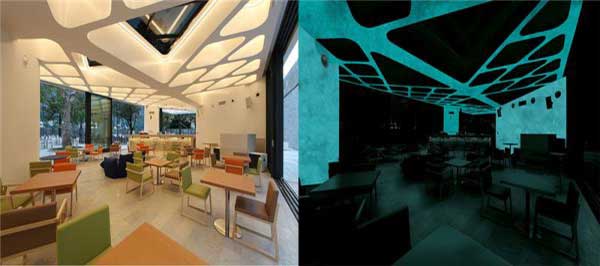The created material absorbs solar energy, and returns it to the environment, it can last for up to 100 years and it’s ecological
In order to light roads, highways or bicycle lanes without the need of electricity, Ph.D. José Carlos Rubio, from Michoacan’s University of San Nicolas Hidalgo, UMSNH in Spanish, created a light-emitting cement that has a life span of 100 years.
“Nine years ago, when I started the project, I realized there was nothing similar worldwide, and so I started to work on it. The main issue was that cement is an opaque body that doesn’t allow the pass of light to its interior”, pointed Dr. Rubio.
He explained that common cement is a dust that when it’s added to water, it dissolves as an effervescent pill. “In that moment it starts to become a gel”, similar to the one used for hair styling, but much stronger and resistant; at the same time, some crystal flakes are formed, these are unwanted sub-products in hardened cement”
Because of this, the researcher focused on modifying the micro-structure of the cement in order to eliminate crystals and make it completely gel, helping it to absorb solar energy and then return it to the environment as light.
Ph.D Rubio detailed that in 2015, global cement production was of about 4 billion tons, this is where this new material can have a widely commercial market. By the morning, the building, road, highway or structure that’s made out of this new cement can absorb solar energy and emit it during the night for around 12 hours.
Researcher Rubio detailed that most fluorescent materials are made out of plastic and have an average of 3 years of life span because they decay with UV rays; however, this new cement es sun resistant and has an estimated lifespan of 100 years.
Furthermore, it is ecologilcal because it’s made out of sand, dust or clay that becomes the gel, and during it’s making the only residue is water steam. Currently, it exists in blue or green color, and the light intensity can be regulated to avoid dazzling drivers or cyclist, or unnecessary glare.
This Mexican project has inspired other countries to follow this line of research. “Due to this patent (the first one for this university), others have surfaced worldwide. In the UK, we received recognition from the Newton fund, given by the Royal Engineering Academy of London, which chooses global success cases in technology and entrepreneurship”.
Currently, this research is in its transfer and commercialization stage, its inclusion in plaster and other construction products is also being developed.












Comments